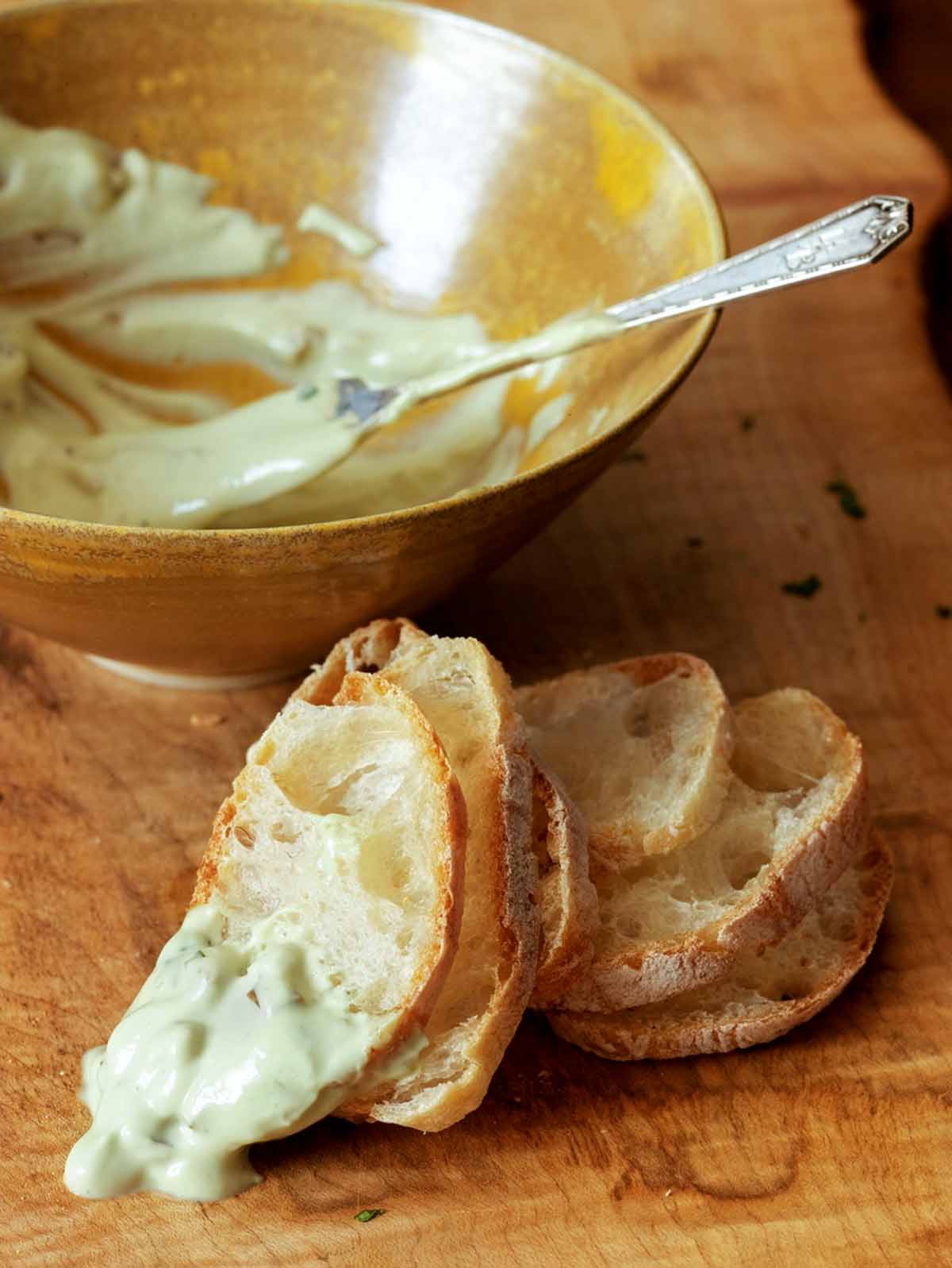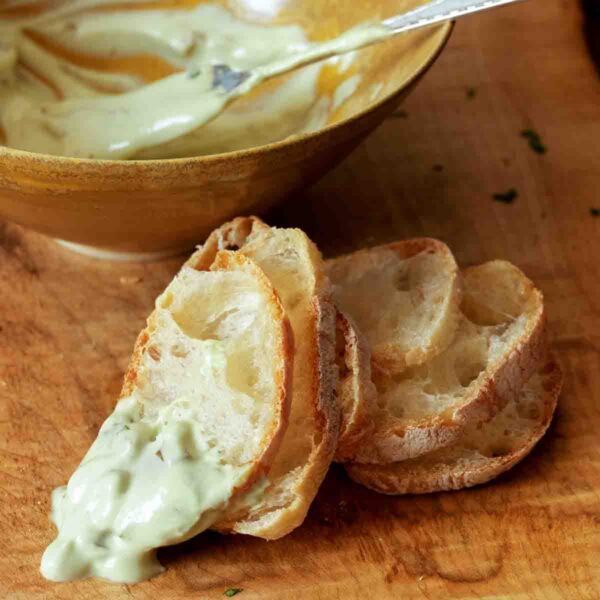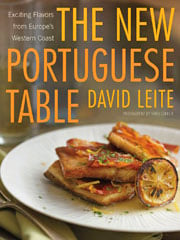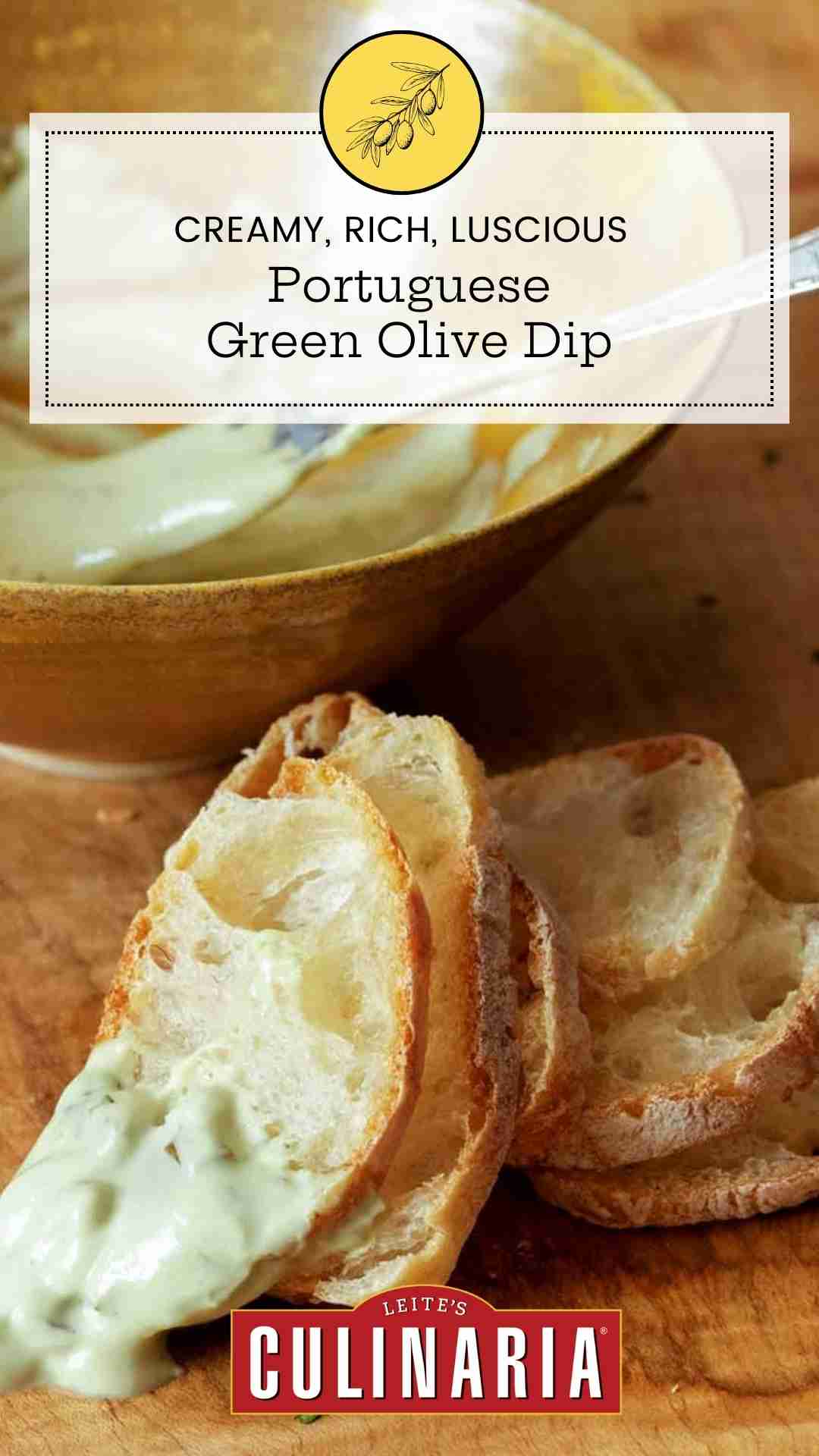
When I visited A Bolota, a lovely restaurant perched on the sweeping plains of the eastern Alentejo, this dip, called patê de azeitonas verdes, was brought to our table. As I nattered away with friends, I dipped, spread, and nibbled, until I realized I alone had eaten all of it. Later, when I became friendly with the cook, Ilda Vinagre, I watched her make it and was flummoxed when she whipped up its silky base: milk “mayonnaise”—whole milk whirred into a smooth consistency with the addition of vegetable oil. I serve this as a dip with a platter of crudités, alongside crackers or bread, or, sometimes, as a topping for grilled fish.–David Leite
Atenção [Editor’s Note: That means “attention”)
Don’t make this in a food processor. The bowls of most processors are too large to allow the scant amount of ingredients to whip up to the right consistency. A small narrow blender or a mini chop or handheld blender works best.

Portuguese Green Olive Dip
Equipment
- A small mini chop or hand blender
Ingredients
- 1/3 cup whole milk, plus more if needed
- 6 oil-packed anchovy filets
- 1 small garlic clove
- Leaves and tender stems of 6 cilantro sprigs
- Pinch of freshly ground white pepper
- 3/4 cup vegetable oil
- 2/3 cup pitted green olives such as Manzanilla, rinsed quickly if particularly salty, roughly chopped
Instructions
- In a blender, pulse to combine the 1/3 cup milk, anchovies, garlic, 2/3 of the cilantro, and the pepper.
- With the motor running, pour the oil in what the Portuguese call a fio, or fine thread. Keep whirring until the oil is incorporated and the mixture thickens, 30 seconds to 1 1/2 minutes, depending on your equipment.
- Scrape the dip into a bowl and stir in the olives. Mince the remaining cilantro, sprinkle on top, and serve. If the dip thickens, you can always simply stir in a tablespoon or two of milk.

Nutrition
Nutrition information is automatically calculated, so should only be used as an approximation.











I heard you describe this recipe on the Splendid Table earlier today. I wish you’d posted a few more of the variations like the cilantro & ginger. I remember you saying something about sriracha…I’m going to play with some variations this evening. Thanks for the hint.
Hi Kim, you can find several milk mayonnaise variations here. Plus check the comments for even more.
If adding the olives at the beginning is liable to thicken the dip too much, could you do it on purpose to make something more spread-like? Tapenadish in texture/consistency? I really love olives, so for me the more the better.
Also, I have some boquerones, and I’m wondering if they would do anything drastic to the emulsion. The difference in flavor I can handle, but I don’t want to ruin the emulsion. I also have anchovies packed in olive oil I can use if the boquerones are a no go.
Thanks!
Hi, Ruthie. The short answer is, “Maybe!” With the incredible success of the milk mayo, and all the variations readers have come up with, I can’t see not experimenting with this. My advice, though, is to make the recipe as stated. Add more olives in the end and see if you like it. (The longer it sits, the more it thickens.)
As far as the boquerones, I have no idea. It will depend upon how acidic the pickling solution is. I would play with the amount of lemon juice–eliminating it if need be–to compensate.
In the end, this is a versatile recipe, but it has a particular balance, and that will differ depending upon what you add to it. Do let us know what you do and how you like it.
I love this. I’m usually not a fan of mayonnaise, especially store bought which I can’t even swallow. On the rare occasions I need some mayo I have to make my own and as pasteurized eggs aren’t available in Germany I make this one for health concerns (especially in summer). Therefore I don’t use anchovy, but a little sugar and lemon juice. Never had problems with it not thickening.Thanks for this great recipe!
You’re welcome, sanni! Thanks for taking the time to comment.